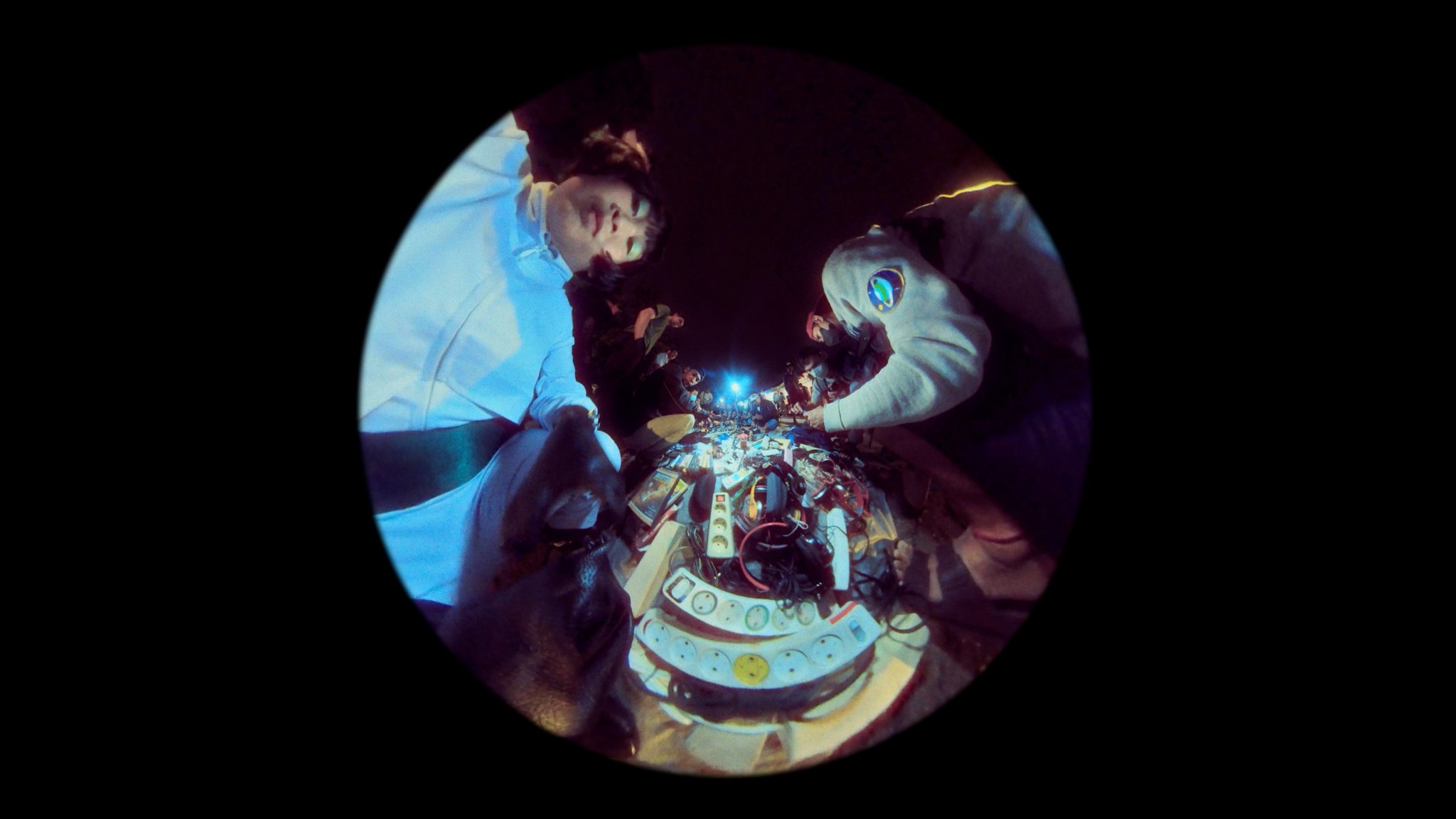Seeing e-waste is the first step towards dealing with it. What role does art have to play in this?
This past January, the Schiaparelli ‘baby’ overtook my social-media feeds. Cradled by a model at the brand’s runway show during Paris Couture Week, the infant was sculpted from pre-2007 batteries, circuit boards and other electronic components encrusted with crystals and pearls. Albeit at a fetishising distance, the techno-putto pointed to e-waste as a material fact: a rare gesture in high-income countries, which frequently treat e-waste as materially and socially invisible while exporting it to Global South nations (though these flows are not as straightforward as they are made out to be, as the latter countries also produce their own e-waste, some of which is exported to the Global North).
Our collective e-waste progeny, in its more and less dazzling forms, bears the distinction of being the world’s fastest growing (‘viral’) solid-waste stream; annual discard is projected to more than double to 111 million tons by 2050. This refuse is typically abandoned to landfills, leaching toxic chemicals into the earth, or alchemised back into useful matter through reuse and recycling, including informal recycling schemes, concentrated in low-income nations, that pose further health, safety and environmental hazards.
Sometimes it becomes an artwork. Using it as raw material to think with, artists are bringing a critical eye to e-waste as a sociomaterial assemblage, offering pathways to grapple with its material life and global flows. Their creations often challenge the obsolescence that manufacturers design into devices and enforce through impediments to repair, and reject externally authored (‘imported’) schemas that claim to determine what is precious. The appropriative strategies they use nod to a rich history of artists working with detritus and questioning hierarchies of value, including the Dadaists, folk artists who turn to readily available materials and contemporary installation artists exploring aggregation and accumulation.

Addis Ababa-based artist Elias Sime has worked with e-waste, among other everyday materials, for over a decade, crafting his intricately patterned and coloured Tightrope works (2009–) from reclaimed computer keys, electrical wires and circuit boards purchased at the city’s open-air markets. His vast wall-reliefs develop slowly due to their laborious construction and the wait for the scrap that will complete a composition; a viewer taking in their details might likewise adopt a gleaner’s purposeful pace. Simulating aerial landscapes, these works conjure up geographies of extraction and manufacture – sites whose pollution outpaces that of the postconsumer waste they help create, begging the question of where ‘e-waste’ begins. (Kate Crawford and Vladan Joler’s Anatomy of an AI System, 2018, an extensive visualisation detailing the staggering amount of material resources, human labour and pollution behind the creation, use and disposal of an Amazon Alexa, gives an idea.)
One such extractive zone is Indonesia’s Bangka Island, where tin – a common electronic solder – is surface-mined for exportation, turning the water and soil acidic. While making Kasiterit (2019), a film narrated by a solar-powered AI (tin is used in solar panels) who addresses the history of the industry in Bangka and the narrator’s place in it, Yogyakarta-based artist Riar Rizaldi was struck by the heaps of imported e-waste dumped there. This in turn inspired his film Fossilis (2023), set in a speculative future in which an archaeologist studies electronic discards (controllers, computers) in a virtual jungle.

Fossilis features sets made from discarded cables and scenes built with abandoned computer-generated imagery from previous projects, another form of electronic refuse. Alongside fisheye footage of a bustling Yogyakarta e-waste market, a voiceover explains: “Our ancestors in the tropical equator… animated detritus circulating through flea markets full of electronic carcasses.” Instead of characterising individuals involved with informal e-waste economies as merely passive victims of exploitative flows, the archaeologist’s counternarrative presents figures who assert agency.
Between its resistance to decomposition, and the posthuman future that it anticipates and hastens, e-waste – precious or not – will outlive us. Building on this premise, New York-based artist-theorist Katherine Behar’s seriously playful E-Waste series of sculptural installations (2014) imagines a future in which Earth is no longer habitable for humans, but electronic devices endure, absurdly continuing to perform rote labour. Partly ossified in blobby, rocklike forms, USB peripherals (mouses, fans) just dated enough to appear archaic bathetically blink and whir. As they characterise objects as having effects, Behar’s decelerationist sculptures also call on us to care about the bodies with which we are enmeshed – be they human or nonhuman – by lingering on the disposability ascribed to machine and human labourers alike.
E-Waste recalls philosopher Jane Bennett’s realisation, while gazing at refuse, that ‘the sheer volume of commodities, and the hyperconsumptive necessity of junking them to make room for new ones, conceals the vitality of matter’. What else is being concealed or obfuscated in our – ‘our’ being necessarily geopolitically situated – cultural imaginaries around e-waste? What narratives of its present and future have we unduly allowed to harden? What is our relation and responsibility to this lively, toxic, unruly and utterly ballooning material? Asking these questions, it seems, begins with looking – not at a shiny spectacle from a remove, but at a knot in which we are socially, materially and affectively entangled.
